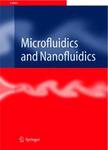版权所有:内蒙古大学图书馆 技术提供:维普资讯• 智图
内蒙古自治区呼和浩特市赛罕区大学西街235号 邮编: 010021

作者机构:Trinity Univ Dept Math San Antonio TX 78212 USA SW Res Inst Mech Engn Div San Antonio TX 78238 USA Inst Applicaz Calcolo CNR IAC Viale Policlin 137 I-00161 Rome Italy Trinity Univ Dept Biol San Antonio TX 78212 USA
出 版 物:《MICROFLUIDICS AND NANOFLUIDICS》 (Microfluid. Nanofluid.)
年 卷 期:2016年第20卷第2期
页 面:1页
核心收录:
学科分类:12[管理学] 1201[管理学-管理科学与工程(可授管理学、工学学位)] 08[工学] 0804[工学-仪器科学与技术] 0805[工学-材料科学与工程(可授工学、理学学位)] 0702[理学-物理学]
基 金:NSF UBM-IRBM [DMS 0926702] Southwest Research Institute's Internal Research and Development Program [18-R8602]
主 题:Computational methods in fluid dynamics Hydrodynamics hydrostatics Chemotaxis
摘 要:The RapidCell (RC) model was originally developed to simulate flagellar bacterial chemotaxis in environments with spatiotemporally varying chemoattractant gradients. RC is best suited for motility simulations in unbounded nonfluid environments;this limits its use in biomedical applications hinging on bacteria-fluid dynamics in microchannels. In this study, we eliminated this constraint by coupling the RC model with the colloidal lattice Boltzmann (LB) model. RC-LB coupling was accomplished by tracking positions of chemoreceptors on particle surfaces that vary with particles angular and translational velocities, and by including forces and torques due to particles tumbling and running motions in particle force-and torque-balance equations. The coupled model successfully simulated trajectories of particles in initially stagnant fluids in bounded domains, involving a chemoattractant contained in a confined zone with a narrow inlet or concentric multiringed inline obstacles, mimicking tumor vasculature geometry. Chemotactically successful particles exhibited higher attractant concentrations near the receptor clusters, transient increases in the motor bias, and transient fluctuations in methylated proteins at the cell scale, while exhibiting more frequent higher particle translation velocities and smaller angular velocities than chemotactically unsuccessful particles at the particle scale. In these simulations, the chemotactic particles reached the chemoattractant with the success rates of 20-72 %, whereas nonchemotactic particles would be unsuccessful. The coupled RC-LB model is the first step toward development of a multiscale simulation tool that bridges cell-scale signal and adaptation dynamics with particle-scale fluid-particle dynamics to simulate chemotaxis-driven bacterial motility in microchannel networks, typically observed in tumor vasculatures, in the context of targeted drug delivery.